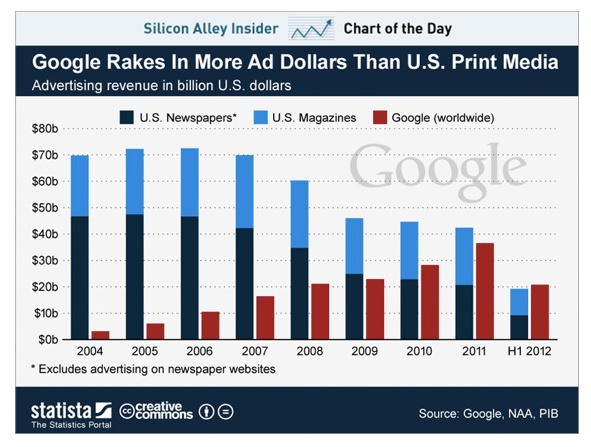Analog nostalgia?
No, not nostalgia. I have a Plan (for when I’m less busy than I am just now).
Seems a shame to have such terrific kit and not make good use of it.
It’s the data, stoopid
This morning’s Observer column.
Which brings us to the Obama election campaign. In 2008, it was obvious that his people were significantly more internet-savvy than the McCain-Palin crowd. (Not that that would have been too difficult.) Obama harnessed the internet to crowdsource fundraising, for example, and used social media to get the vote out. And he used YouTube to bypass the TV networks and get his message directly to voters – as with A More Perfect Union, his Philadelphia speech tackling the problems raised for him by the inflammatory views of his pastor, Jeremiah Wright. A More Perfect Union is a long (37-minute), serious speech which would have been reduced to a set of soundbites by the TV networks. By using YouTube, Obama ensured that millions of US voters heard his unexpurgated version.
But none of this was rocket science. The interesting question this time was what the Obama crowd would do next. Now we know, thanks to a fascinating piece of reporting by Michael Scherer in Time, published just after the election result was clear. Basically, it comes down to numbers…
Harvard 2.0 or just another tech bubble?
Interesting piece by Lee Gomes in MIT Technology Review.
Harvard, by many measures the most prestigious college in the U.S., has been at it for nearly 400 years. Ben Nelson, founder of an online education startup called the Minerva Project, says he can do equally well in just three.
Minerva is one of the least-publicized but also most well-funded and audacious of the current crop of online education startups. Funded with $25 million from Benchmark Capital—one of the well-known venture-capital firm’s largest-ever investments—Minerva says it will begin accepting applicants in 2015 for an entirely Web-based college program. The resulting undergraduate degree, it promises, will have all the prestige of anything the Ivy League can offer, but at half the cost.
Many people would dismiss Minerva’s notion of some sort of instant online Harvard as the fever dream of someone who had sat through one too many TED talks. But the for-profit company’s assumptions about how the Internet will change education can be found, to varying degrees, in most of the scores of startups now getting venture money to do instruction online.
The level of venture-capital investments in education has nearly doubled in 2011, and now rivals figures last seen during the dot-com boom. Representative of the crop is Coursera—formed by two Stanford computer scientists—which offers a growing list of free online classes (see “The Technology of Massive Open Online Courses”). Even though Coursera has no clear plans for how to make money, an investor involved in its initial $16 million financing said other top VCs pleaded by phone and e-mail to get in on the deal, regardless of the price. It’s the sort of enthusiasm that often signals a tech investing bubble.
Hmmm… I think I’d read this as Round Two of the 1999-2000 fantasies about online education. It smacks of Fathom.com. But the movement started by Peter Norvig and Sebastian Thrunn will eventually have a disruptive effect on Higher Ed. The $64B question is how MOOCs will eventually start to disrupt conventional, lower- and middle-range HE providers. The Harvards, Stanfords and Cambridges of this world will be largely untouched by these developments, largely because they are really selling positional goods as much as an educational experience.
Twitter-rage
If you want a peep into the dark recesses of what might loosely be called the Republican mind, then this slideshow of choice tweets following Obama’s victory is just the ticket.
How the news came to Colorado
What is wrong with these people?
DENVER, Colo — “Welcome to Hell!”
The shout broke a brief quiet inside a lounge of Denver’s Sports Authority Field, where the Colorado GOP held its election-night watch party. Fox News had just officially announced that Obama won Ohio, and with it the nation. Karl Rove was another thing, but it was a short moment of quiet, as supporters here processed the fact that not only had the president won the race, but after millions of dollars of advertising and weekly traffic jams from the candidates’ nonstop visits, Colorado ultimately did not matter in the final count.
“What is wrong with America?” one supporter murmured under his breath.
Debbie Cohen, 56, wept.
“I am deeply, deeply distressed. I have two grandbabies, and I look at this and I know there is no turning back,” she said, through tears. “How can America pick a man like that? I have been through many, many elections, but I have never known the desperation that I know now. I feel devastated. I feel hopeless.”
Cohen, a teacher, said she’ll probably feel better tomorrow, but for now, she needs to grieve.
“I don’t know where to go, except on my knees to God,” she said.
The Real Real America
Paul Krugman sums it up.
Tomorrow — or I guess today — comes the cleanup; when thousands, perhaps millions, of right-wing heads explode, it makes quite a mess. Also, notice that the polls were right. I wonder if I can get invited when Nate Silver is sworn in as president?
OK, somewhat more seriously: one big thing that just happened was that the real America trumped the “real America”. And it’s also the election that lets us ask, finally, “Who cares what’s the matter with Kansas?”
For a long time, right-wingers — and some pundits — have peddled the notion that the “real America”, all that really counted, was the land of non-urban white people, to which both parties must abase themselves. Meanwhile, the actual electorate was getting racially and ethnically diverse, and increasingly tolerant too. The 2008 Obama coalition wasn’t a fluke; it was the country we are becoming.
And sure enough that more diverse and, if you ask me, better nation just won big.
Notice too that to the extent that social issues played in this election, they played in favor of Democrats. Gods, guns, and gays didn’t swing voters into supporting corporate interests; instead, human dignity for women swung votes the other way.
A huge night for truth, justice, and the real American way.
Books to infinity
Bjørn Lomborg on climate policy
First of all, he says we need to recognise that just continuing with current policies won’t work.
The Copenhagen Consensus is a think tank that ranks the economically smartest approaches to a variety of issues. In 2009, we asked 27 of the worlds top climate economists to identify the costs and benefits of the top climate solutions. A group of eminent economists, including three Nobel laureates, ranked the smartest ways to fix the climate. Their answer was: Dont continue to expand current policies. Trying to make fossil fuels so costly that no one wants them is bad economics, in addition to being bad politics.They suggested instead three changes to the way the United States approaches climate change. First, we should aim to make green energy so cheap everyone will want it. This will require heavy investment in research and development of better, smarter green technologies. Such an investment has much lower costs than current climate policies like the EU 2020-policy, but a much greater chance of allowing the entire world to make the switch to green energy in the long run.
A good example is the innovation of fracked gas, which has made the price of natural gas drop dramatically — allowing a switch in electricity production away from coal. This in turn has singlehandedly caused the United States to reduce its annual CO2 emissions by about 500Mt, or about twice as much as the entire global reductions from the last 20 years of international climate negotiations. Moreover, it has not cost the United States anything — in fact, U.S. consumers are saving about $100 billion per year in cheaper prices. That’s a policy that is easy to sell around the world.
Second, we should investigate (but not deploy) geoengineering as a possible insurance policy to runaway climate change. Cooling the planet with slightly whiter clouds over the Pacific could completely counteract global warming at the cost of $6 billion, according to research by Eric Bickel and Lee Lane for the Copenhagen Consensus — between 1,000 and 10,000 times cheaper than anything else we are considering today.
Third, we should recognize that there are huge lags between our actions and their effects on the climate — no matter what we do, it will only affect the second half of this century. Thus, if we want to tackle climate impacts such as Hurricane Sandy, we need to step up adaptation and make our societies more resilient. This is mostly an inexpensive no-brainer.
Yep. Wonder if the good citizens of New York are thinking along those lines too. And what about the good citizens of London Town, much of which is as vulnerable as Manhattan
Book publishers have long been playing into Amazon’s hands
This morning’s Observer column.
In the long view of history, the Bertelsmann-Pearson deal will be seen as just the latest instalment of a long-running story: a tale of formerly dominant industries trying to prevent their venerable business models being dismantled by the internet. The early victims were travel agents, record labels, newspapers, magazines and broadcast networks.
In each case, the relevant executives could be heard loudly declaring that while it was indeed the case that the guys “over there” (gesturing in the direction of some other industry) were being disintermediated by the network, nevertheless the speaker’s own industry was special and therefore immune from technological contagion. Universities and book publishers have been arguing like this for quite a while. The Bertelsmann-Pearson deal suggests that the publishers have finally heard the tocsin. Universities haven’t got the message yet.
The funny thing about the publishing industry is that long before it was really threatened by the internet it was busily rearranging itself so as to make it more vulnerable to it…




